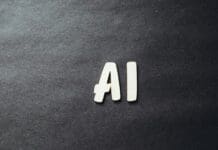This post is also available in:
 עברית (Hebrew)
עברית (Hebrew)
In the field of artificial intelligence (AI), researchers often face the challenge of ensuring that algorithms perform reliably in real-world conditions. While AI solutions may work well in theoretical simulations, they often encounter unforeseen issues when deployed in practice. To address this, ETH mathematician Juan Gamella has developed innovative “mini-labs” designed to offer a controlled, real-world testing environment for AI algorithms. His paper was published in Nature Machine Intelligence.
These miniature laboratories are physical platforms to test AI models, which can be placed on a desk. Unlike traditional simulation environments, which can sometimes lead to overestimated AI performance, mini-labs offer real measurement data and are based on well-understood physical systems, such as wind dynamics and light behavior. This setup allows researchers to test AI algorithms in more complex, dynamic environments before applying them to actual tasks, according to TechXplore.
The first two mini-labs are designed to simulate key challenges that AI tools often face. One lab mimics the dynamic nature of wind systems, offering an ideal setting for testing AI algorithms focused on control problems. The second lab operates based on the laws of light physics and is used to test AI models that learn physical laws from data, such as those aiding in scientific discoveries.
Gamella’s mini-labs serve as a vital intermediate step between the idealized conditions of simulation and the complexities of real-world scenarios. Much like wind tunnels are used in aircraft development to validate designs before full-scale testing, these labs act as a “sanity check” for AI models, helping identify weaknesses early in the development process.
The applications of these mini-labs are not confined to engineering alone. Gamella has collaborated on efforts to adapt the labs for testing AI in fields like cell biology, demonstrating the versatility of this approach. Additionally, the mini-labs have been used to enhance the accuracy of large language models, pushing the boundaries of what AI can achieve in practical environments.
According to TechXplore, Gamella’s mini-labs also contribute to the emerging field of causal AI, where understanding cause-and-effect relationships is essential for creating more precise and transparent models. By testing causal AI algorithms in these labs, researchers can validate their accuracy in understanding real-world causal dynamics.
Overall, these mini-labs offer researchers a reliable and flexible tool to bridge the gap between theory and real-world application.


























